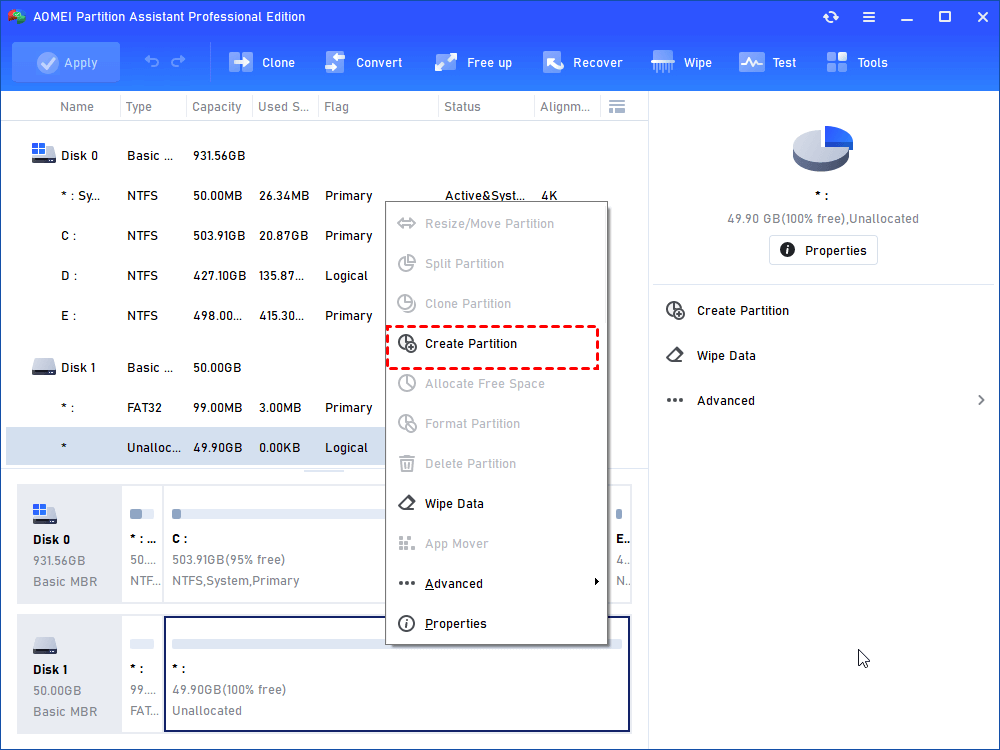

- #Logical volume manager windows drivers#
- #Logical volume manager windows update#
- #Logical volume manager windows driver#
- #Logical volume manager windows code#
The Partition Manager is a driver newly introduced in Windows 2000 and also present in Windows XP and Windows Server 2003. See Chapter 9 for a description of RAID, including RAID 0, RAID 1, and RAID 5. Mirror volume (a RAID 1 volume built out of up to 32 partitions) Striped volume (a RAID 0 volume built out of up to 32 partitions) Spanned volume (a volume built out of up to 32 partitions that can exist on one or more physical disks) Windows NT 4.0 and Windows 2000 Volume Terminology Online growth of simple and spanned volumes Maximum number of partitions that can be combined into a volume Spanned volumes (partitions that exist across multiple physical disks combined) Simple volumes (all partitions on single physical disk) Sections 6.2.1 through 6.2.4 describe these two components, as well as the new volume management functionality. To implement these volume management changes, two new system components ”the Partition Manager and the Mount Manager ”were introduced. For example, Windows 2000 not only removes the limitation of 26 volumes, but also allows volumes to appear and disappear dynamically without requiring a system reboot. Windows 2000 introduced remarkable changes in the way volumes are managed. When a basic disk is converted to a dynamic disk, the old entities are transformed into new entities, as detailed in Table 6.2.
#Logical volume manager windows drivers#
The corresponding drivers for LVM are called VxBoot and VxLoad. Both of these are boot time “only drivers. DMBoot is loaded if a fourth driver, DMLoad (dmload.sys), determines that there are one or more dynamic disks present. DMBoot (dmboot.sys) can only read the LDM database. The corresponding driver for LVM is called VxIO.
#Logical volume manager windows code#
DMIO size is reduced because it does not have code to read or write the LDM database or interpret the LDM on disk format. DMIO also creates the volume device objects. DMIO (dmio.sys) is the equivalent of FtDisk and implements the volume manager functionality for normal data read and write operations to the partitions. The corresponding driver for LVM is called VxConfig. When any configuration changes are made, DMConfig reflects the change in a memory copy of the database.
#Logical volume manager windows update#
DMConfig is a driver that can read and update the LDM database. In reality, LDM and LVM are implemented as four different drivers:ġ. The idea is to reduce code size and complexity for normal runtime situations. LDM and LVM are referred to as if they were a single entity, but each one is implemented as four different drivers, each with a varying amount of functionality. Table 6.1 summarizes the capabilities of the three major volume managers available for Windows 2000 and Windows Server 2003 products. Performance by storing data in a way that it can be retrieved efficiently. The volume manager also can concatenate multiple partitions from multiple disks into a single larger volume.ĭata protection by storing data redundantly (using some form of RAID RAID is described in Chapter 9) or storing the data with a checksum. Storage virtualization wherein a file system does not need to know which physical disk the file system is residing on.

The VERITAS Logical Volume Manager ( LVM ) that is available from VERITAS as a commercial product and functionally is a superset of the Logical Disk Manager.Īll of the volume managers listed here provide functionality that can be summarized as follows : The Logical Disk Manager ( LDM ) that ships natively with Windows 2000 and Windows Server 2003. In Windows 2000, FtDisk is always loaded because it handles all volumes on basic disks. In Windows NT 4.0, the FtDisk driver was only optionally loaded because it dealt only with enhanced volume functionality such as fault tolerance. The FtDisk Manager that ships natively with Windows 2000 and Windows Server 2003. This section concentrates on describing the functionality of volumes in the post-Windows 2000 world and relates that functionality to the three specific volume managers that are available for the Windows operating system in the post-Windows 2000 world: Volume managers and how they fit into the Windows storage stack were discussed in Chapter 1. Volumes are implemented in the Windows Server family by a device driver generically referred to as a volume manager. The disk partitions themselves may be soft partitions (existing on dynamic disks) or hard partitions (built on top of basic disks). As explained earlier in this chapter, volumes are an abstraction built on top of disk partitions.


 0 kommentar(er)
0 kommentar(er)
